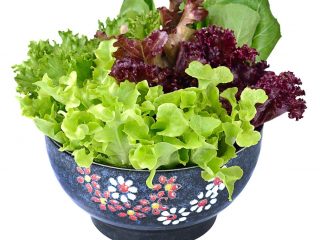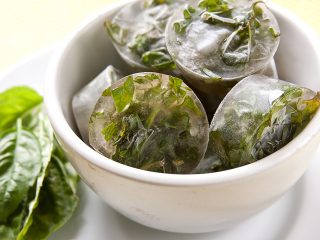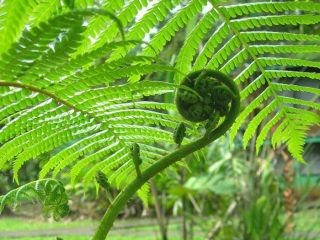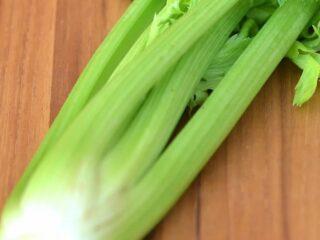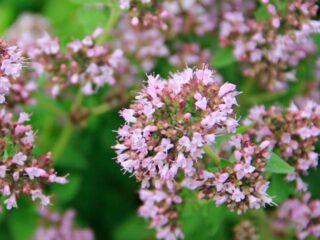Content
Frillis lettuce is considered a variety of the popular Iceberg variety group and belongs to the genus Lettuce (Asteraceae family). It can be grown in open ground and on a windowsill. This leaf variety is widely used in cooking; it has many beneficial properties.
Description of Frillis salad
The variety was developed approximately 100 years ago. The homeland of this species is America. The plant looks like this:
- tight socket;
- weight up to 0.3-0.5 kg;
- color rich green;
- leaves are corrugated, pointed in shape;
- the plates are elongated, the edges are uneven.
The variety is resistant to bolting. Ripening takes 35-50 days after sowing.
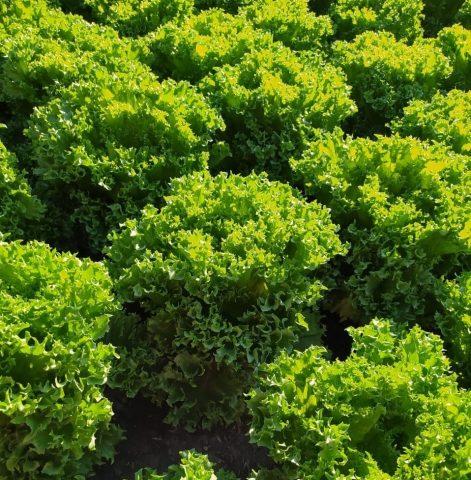
Many people value leafy lettuces for their decorative appearance, so they plant them not only in beds, but also along paths
What does Frillis salad taste like?
Many people like this variety for its crispy texture. The taste of Frillis salad is high. The leaves are pleasantly refreshing, tender and very juicy. They taste sweetish, with a slight bitterness.
Composition and calorie content of Frillis salad
The calorie content of Frillis salad per 100 grams is only 25 kcal. The volume of leaves for such a weight is very large, therefore the serving has a minimum energy value. BJU product per 100 g:
- proteins – 1.4%;
- carbohydrates – 1.7%;
- fats – 0.2%;
- dietary fiber – 1.2%;
- water – 95%.
Such indicators make Frillis salad an effective component of the diet for weight loss and healthy eating. There are other valuable elements in the composition:
- vitamins – A, E, K, ascorbic acid, group B (choline, biotin, thiamine, pyridoxine, pantothenic, folic, nicotinic acid, riboflavin);
- cobalt;
- manganese;
- potassium;
- chromium;
- magnesium;
- phosphorus;
- calcium;
- chlorine;
- selenium;
- iodine;
- iron;
- molybdenum;
- fluorine;
- copper;
- zinc;
- manganese.
Frillis green salad also contains organic acids and amino acids.
What are the benefits of Frillis salad?
This type of salad contains a lot of vitamins and other valuable elements, which is why it is very healthy. Regular use of the product provides the following effect on the human body:
- normalization of blood clotting;
- acceleration of regenerative properties;
- diuretic effect;
- sedative effect;
- benefits for bones;
- normalization of cholesterol levels;
- restoration of water-salt balance;
- increasing immunity;
- prevention of eye diseases;
- improvement of visual acuity;
- normalization of intestinal microflora;
- strengthening the vascular, central nervous system;
- increased production of leukocytes.
The benefits of Frillis salad for women are multifaceted.Thanks to the content of folic acid and other valuable elements, mood improves, nails become stronger, hair becomes thicker and acquires shine. Regular use of the product has a positive effect on the skin. Regeneration is activated, the formation of new cells is stimulated. As a result, the skin remains smooth and fresh.
Harm and contraindications
Salad is contraindicated in case of individual intolerance. People prone to food allergies should introduce it into their diet with caution. More often, a negative reaction to the product is expressed by rashes and redness of the skin. Digestive disorders and other unpleasant consequences occur less frequently.
It is also not recommended to use the product for gout and urolithiasis. It is banned due to its high content of ascorbic acid and oxalates, which can aggravate the condition.
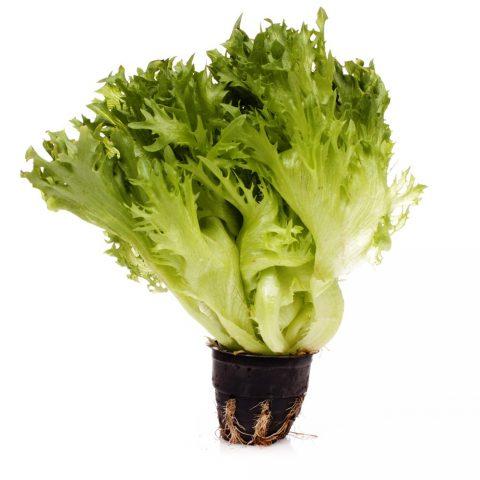
Store-bought Frillis salad can be treated with chemicals - it is important to thoroughly wash the leaves; heat treatment is recommended
How they eat
To get the most out of Frillis lettuce, it should be consumed fresh. The leaves should be as fresh as possible - the longer they lie, the more they lose valuable elements.
The Frillis variety is great for various salads. It can be combined with any vegetables. The leaves are also used as a side dish for meat or fish. They go well with seafood. The best dressing is vegetable (usually olive) oil and lemon juice.
Fresh Frillis is also used in making sandwiches and smoothies. The leaves serve as decoration for various dishes. They can be served as a base for appetizers, salads or vegetables. Frillis is also added to hot dishes.
Growing conditions
The Frillis variety can be successfully grown both in open ground and at home. It is better to sow the crop at short intervals, so that later you can harvest the crop step by step and always have a fresh product on the table.
Growing Frillis lettuce in open ground
In open ground, the Frillis variety is grown from April to September. Several harvests can be harvested during the season.
Various soil types are suitable for growing Frillis lettuce. Site preparation should begin in the fall. It is dug up or plowed and humus is added. If the soil is acidic, liming is required. In spring, mineral fertilizers are applied.
Growing Frillis lettuce from seeds in open ground involves the following algorithm:
- On the dug up and leveled area, make grooves 1-2 cm deep.
- Distribute the seeds among the depressions.
- Sprinkle with sand.
- Water generously.
- Cover with film. This measure is not necessary in the summer when it is warm at night. The film is finally removed when the seedlings sprout.
It is recommended to plant Frillis lettuce in wide rows, leaving a distance of 0.6-0.7 m between them. When dense shoots appear, they are thinned out twice. First, in the phase of the first true leaf, 5-7 cm are left between plants. With the next thinning, the interval is increased to 15-20 cm.
It is recommended to water Frillis salad in open ground in the evenings. The culture requires daily moisture. A lack of water will have a bad effect not only on its growth and development, but also on its presentation and taste.
Periodically, the row spacing is loosened. Do this after watering or heavy rain. Systematic weeding is also required.
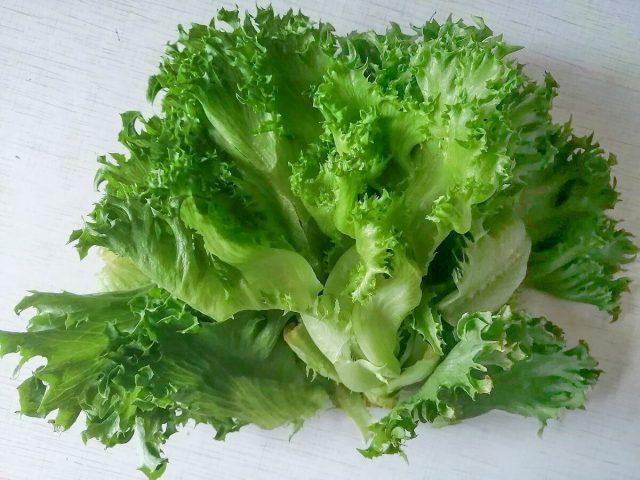
When growing Frillis lettuce, only the row spacing is loosened - the roots are close to the surface, so it is better not to touch this area
Frillis lettuce has good cold resistance, so it can be planted before winter. They do this late in the fall - in October-November, before frost sets in. The pre-winter sowing algorithm is simple:
- Add fertilizer to the soil and loosen it.
- Make grooves 10 cm deep at intervals of 25 cm.
- Sow the seeds densely.
- Cover the crops with humus.
- Cover with soil.
- Water.
Such plantings need to be covered. It is optimal to use spruce branches. In spring, the shelter is immediately removed. The harvest will be at the beginning of the season.
Growing Frillis lettuce on a windowsill
Boxes are used to grow Frillis lettuce from seedlings or as a container culture. The optimal height is up to 13 cm and width 0.5-0.7 m.
The soil for growing Frillis lettuce on the windowsill is either purchased or made independently:
- 40% peat;
- 40% humus;
- 20% sand.
The algorithm for sowing Frillis lettuce is simple:
- Organize drainage. It is optimal to use expanded clay.
- Fill the box with soil and compact it.
- Spill the soil with a solution of potassium permanganate. One crystal per 500 ml of water is enough (take boiled).
- Make grooves or holes at intervals of 10 cm. Depth 1-2 cm.
- Distribute the seeds along the grooves at a distance of 7-10 cm.
- Cover the crops with soil.
- Moisten with a spray bottle.
- Place in a dark place.
When the first shoots appear, the seedlings should be moved to the windowsill. Be sure to regularly water the plantings and periodically feed them.
At home, to grow Frillis lettuce, you should not choose a place where the sun's rays fall directly. In November-March, a fluorescent lamp can be used as additional lighting.It should be at least 0.5 m higher than the plants.
It is important to maintain humidity. To do this, the plantings are regularly sprayed. If possible, place a humidifier nearby. The optimal temperature for growing the Frillis variety is 15-20 °C.
Diseases
Frillis lettuce may suffer from disease. One of the problems is rhizoctonia (white leg). If the seedlings are damaged, the stems and roots rot, and the plants quickly die. In adult specimens, the disease manifests itself as darkening and drying of the foliage. Brown spots appear at their base and at the bottom of the stem. The coating on them is white at first, then darkens. Affected plants are removed and destroyed, and the soil is replaced and disinfected.
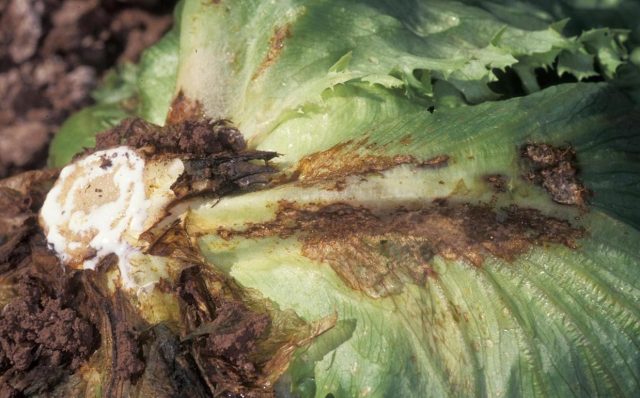
Rhizoctoniosis is promoted by dense crops, excessive watering, and the rainy season.
Another problem is downy mildew (downy mildew). To combat it, biological drugs are used:
- Fitosporin-M;
- Gamair.
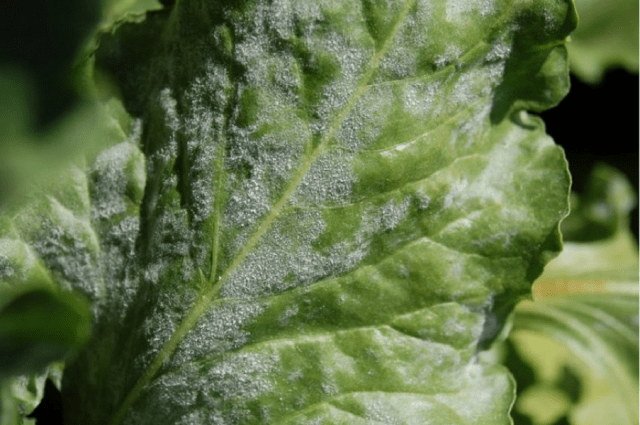
To combat downy mildew, seeds are treated with biological preparations such as Alirin-B, Gamaira, Fitosporin-M before planting.
Harvesting
Frillis should be cut off carefully. This is easy to do because the plants form a head. They should not be cut at the root, but should be left 5-7 cm. In this case, there will still be a harvest.
It is better to cut Frillis lettuce in the morning. At this time, the leaves are as elastic and fresh as possible. If you collect greens in the heat or rain, they will quickly lose their properties. Keeping quality in this case is minimal.
Conclusion
Frillis salad is a healthy and tasty green that is usually eaten fresh as a side dish or component of various dishes. This variety can be grown in open ground or on a windowsill.The culture is quite unpretentious in care.
Reviews of Frillis lettuce
